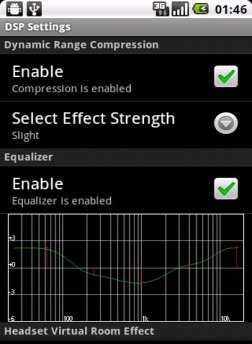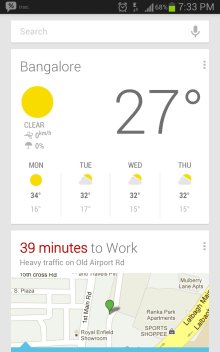-
Madana Prathap
26th Feb 2013
When was the last time a manufacturer sold an Android device running the latest version of the OS? In India, I've only seen the LG Nexus 4 and the Samsung GALAXY Nexus running Android Jelly Bean 4.2.1, which is the platform's most recent version.
Both these devices are part of Google's Nexus series, which are positioned as reference devices and hence they get the latest updates. In a fair world, the same privilege should extend to at least those who buy more expensive flagship phones. Yet Jelly Bean 4.2 has not been officially rolled out to buyers of Samsung Galaxy S3, LG Optimus 4X HD, Motorola Razr Maxx, HTC One X+, or Sony Xperia Ion. Thankfully, it is possible to get versions of the latest OS for your phone using third party versions of the OS. All it needs is an ability to read instructions and follow them carefully. You dont really need to be a geek to be able to do this (however, if you are the paranoid kind, custom ROMs are not for you).
What Is A Custom ROM?
A "custom ROM" is made by someone other than your phone manufacturer. Many phones (dated up to three years old) continue to enjoy a dedicated fan following, and a developer community to match. These developers provide small customizations for your phone, or a complete replacement to the phone software. That way, they manage to bring your device up to speed with the latest (or at least come very close to the latest).
Installing a custom ROM onto your phone would add features, make it faster, or both. Usually, such software is prepared, maintained, and updated by a single person or a group of people.
Who Can Benefit From An Android Custom ROM?
Over two-thirds of Android devices remain at Gingerbread (version 2.3) or lower. New tablet/phone purchases often end up being justified on the basis of wanting an OS update. Are users of older Android devices fated to no software update, despite their hardware being capable? Clearly, even a well-specced phone that has been updated to Android Jelly Bean 4.1.2 misses out on a lot of good improvements (scroll down to see a taste of what newer OS updates bring). Waiting for the manufacturer to provide an over-the-air update can mean a wait of over six months (or can simply mean never).In short, anyone whose has a phone whose hardware is capable of a new OS version, but which is not supported by the manufacturer can benefit from custom ROMs.
When To Use One And Why You Should Be Careful Since only an official ROM is supported by the phone manufacturer, switching ROMs may cut you off from using warranty to fix phone hardware issues as well. Do note that when the installation of a custom ROM goes bad, the device can be rendered unusable (usually called 'bricking'). Often, even a bricked device can be rescued.
Since only an official ROM is supported by the phone manufacturer, switching ROMs may cut you off from using warranty to fix phone hardware issues as well. Do note that when the installation of a custom ROM goes bad, the device can be rendered unusable (usually called 'bricking'). Often, even a bricked device can be rescued.
[In extreme cases, especially when there is no manufacturer support to flash back to stock OS, the device may become completely useless].
After installing a custom ROM, software support can be found at the "community" of other users, who use the same phone and custom ROM as you. It is simply a group of users like you and me, and so don't expect any promises of resolving any issues you may face. That being said, you may find this community far more useful and helping than your manufacturer, simply because the communities are often passionate about their work.
Installing a custom ROM doesn't require very extensive knowledge. All you need is the ability to search using Google, and the capability to follow written instructions. Alternatively, you may want to ask a tech-savvy friend to install it.
Where To Look For A Custom ROM?
The easiest route is to visit the XDA Developers forum or the CyanogenMod website. Many other sites dedicated to Android custom ROMs exist too, a simple Internet search should turn up a lot of options. You may find more than one appealing ROM, so trying out all of those you're interested in is the best way to decide upon one to use. Or at least, read up on the specialities of the individual mods.
How To Install A Custom ROM?
The exact details of how to install a ROM differ based on your device, chosen distribution, and Android version. Amongst the big brands in general, Samsung phones/tablets are the easiest to tinker with a ROM of your choice, and generally doing so does not void your warranty.
LG and Sony are fairly simple to work around too, but Motorola and HTC place the most obstacles in your path by voiding warranty. This is because you may find small "bugs" in the operation of non-official software: It doesn't behave as normally expected, or completely leave your phone dead and unable to startup, needing special steps to fix. Your phone manufacturer will not want to take responsibility in such cases.
More About CyanogenMod Reading their Wikipedia entry and their own Wiki is obviously the quickest path. In brief, CyanogenMod 10.1 corresponds to Android OS version 4.2 and is available for a lot of devices. Anyone can decide to develop and port it over to a device of their choice, along with adding/removing features of their choice and device compatibility.
Reading their Wikipedia entry and their own Wiki is obviously the quickest path. In brief, CyanogenMod 10.1 corresponds to Android OS version 4.2 and is available for a lot of devices. Anyone can decide to develop and port it over to a device of their choice, along with adding/removing features of their choice and device compatibility.
Here are two terms you may encounter and don't have to fear-- Rooting: Refers to having full access to your phone, which isn't normally allowed in Android phones for security purposes.
- AOSP: Stands for Android Open Source Project, and an AOSP ROM usually means it is clean (as seen on Nexus series of devices) with minimal "pollution" or changes/additions.
Besides the new features of the OS itself, the CyanogenMod Project adds features such as Lockscreen Gestures to directly launch apps/actions, Phone Goggles to filter calls/SMS, Themes support to change the look across-the-board, Incognito Mode for stealth browsing, OpenVPN for VPN tunnels, and DSP Equalizer for sound processing.
Many developers build upon both, Android's native functionality and the enhancements of CyanogenMod, to go further and give special options in the "Settings" menu. Such options may be as innocuous as running your phone at a lower processor speed to save battery, or as audacious as force-enabling "Tablet UI" even on a small phone screen thereby giving you a wholly new experience.
Is My Phone / Tablet Supported?
If you own a device that is fairly popular and widely available, it is likely that there are lots of users, and a few of them took on the mantle of a developer. If very few people have heard of the device in your hand, or it uses obscure hardware components, it is less likely to be supported. Yet, you find all the big international brands and a large number of Chinese brands supported. You have simply got to search it out on a search engine (and I've found the Google works just fine).
Once you've done so, stay tuned in to the developers' announcements and you'll find your old device capable of much more. Your phone living that much longer of a useful life may help you avoid spending on a new phone.
Annexure - Treasure Trove Of Features In Updates
As promised earlier, here's a taste of what you might be missing out on if you are stuck with an older version of Android.
First up let's look at ICS (Ice Cream Sandwich) or v4.0: - Improved hardware acceleration for higher graphics quality in games.
- Improved hardware acceleration for higher graphics quality in games.
- Support for quad/dual core processors.
- Improved interface supporting phones and tablets.
- More logical "Settings" re-grouped for easier use.
- Support USB accessories beyond storage devices.
- Built-in screenshot capture.
- Face Unlock at lock screen with facial recognition.
Jelly Bean 4.1:
- "Project Butter" for smoother interface.
- Expandable, customizable, actionable notifications.
- Resizing of widgets automatically.
- Default web browser is improved and tabbed (Google Chrome).
- "Google Now" voice search to help you have an answer to iPhone's Siri.
Jelly Bean 4.2: - Swype-like gestures supported natively by keyboard.
- Swype-like gestures supported natively by keyboard.
- Native Camera application is improved and faster, supports panoramic photos.
- One-touch controls from Notification screen.
- Two-finger swiping of Notification bar for direct access to crucial Settings.
- New clock app with built-in world clock, stop watch and timer.
- Lock screen can show widgets, calendar appointments, and directly swipe to camera.
- "Daydream" screensavers can show information when phone is docked/idle.
- Basic anti-malware security for Play Store and premium-priced SMS.
- More photo editing options, and gallery effects to show-off.
- Instant switching between recent applications is finally a reality.
Refresh Your Android Smartphone With A Custom ROM | TechTree.com
Refresh Your Android Smartphone With A Custom ROM
CyanogenMod 10.1 Milestone 1 builds available, is your Android phone running Jelly Bean 4.2 yet?
News Corner
- DRIFE Begins Operations in Namma Bengaluru
- Sevenaire launches ‘NEPTUNE’ – 24W Portable Speaker with RGB LED Lights
- Inbase launches ‘Urban Q1 Pro’ TWS Earbuds with Smart Touch control in India
- Airtel announces Rs 6000 cashback on purchase of smartphones from leading brands
- 78% of Indians are saving to spend during the festive season and 72% will splurge on gadgets & electronics
- 5 Tips For Buying A TV This Festive Season
- Facebook launches its largest creator education program in India
- 5 educational tech toys for young and aspiring engineers
- Mid-range smartphones emerge as customer favourites this festive season, reveals Amazon survey
- COLORFUL Launches Onebot M24A1 AIO PC for Professionals







Reader Comments (4)